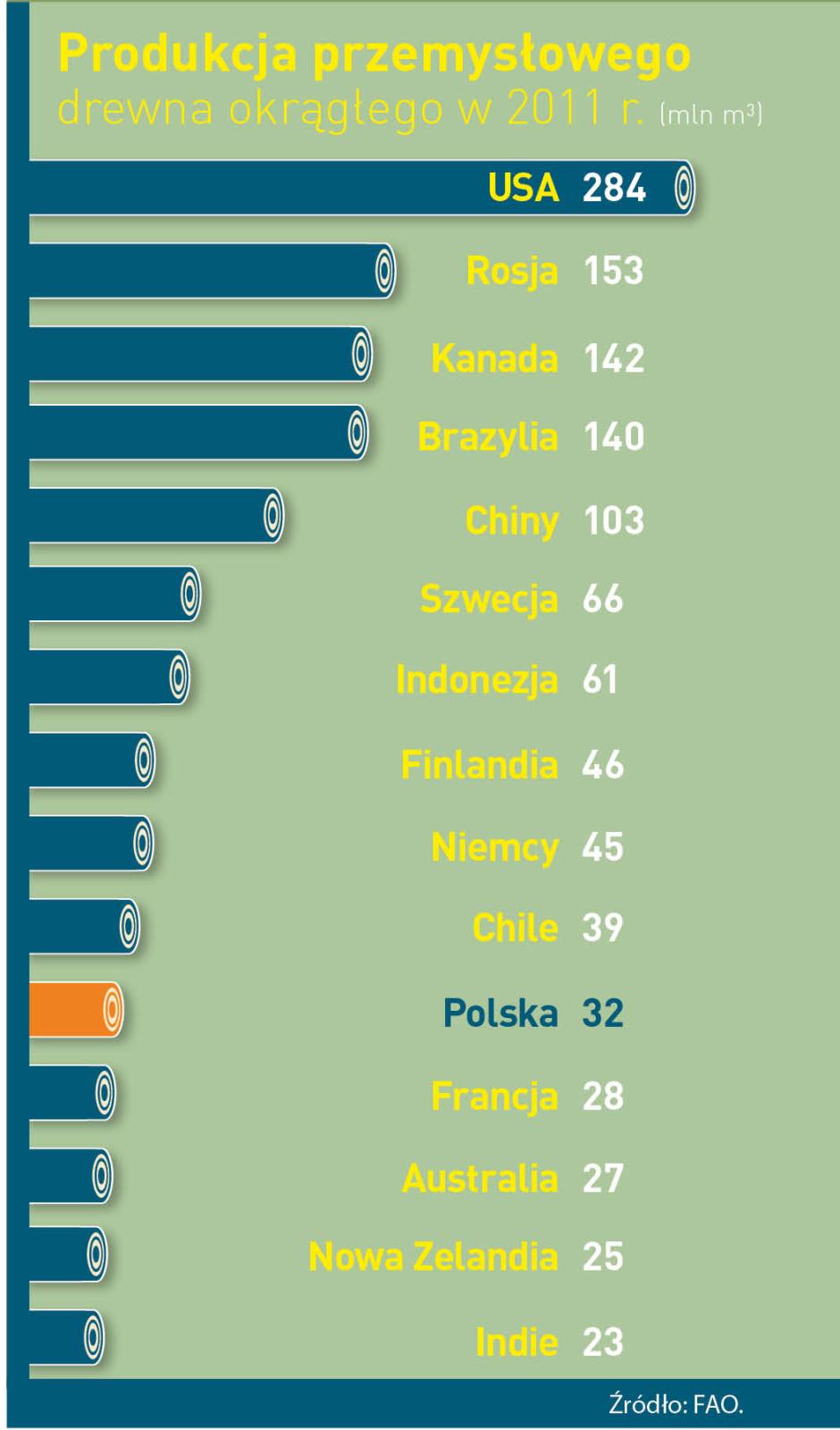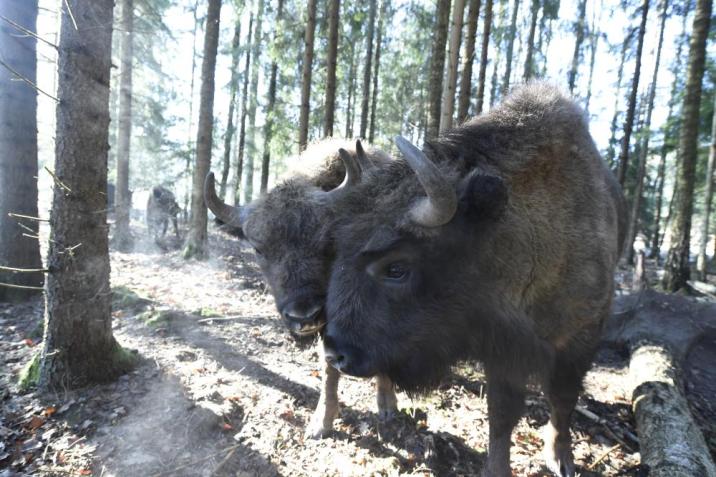 Asset Publisher
Asset Publisher
Polish hit
Polish products made of wood – furniture, window and door frames, yachts or paper and packages – these are real hits of the market.
Our country is the is the 10 largest producer of furniture and the 4 largest furniture exporter in the world. Wood industry sells abroad goods of its approximate value of 45 million zl annually, what constitutes 10 % of the whole Polish export. The measurement of the essential role of forestry and timber based sector in our management is that, it works out about 2 % of GDP (Gross Domestic Product). Not only it gives work to thousands of people, but it is also an engine of investment and of development of innovative technologies. From the beginning of transformation, it drew foreign capital of its value over 30 million zl.
Forest gives work
The State Forests belong to the leading group of employers in Poland. However, both forest and timber provide for workers with several thousand of Forestry Services Companies, which within the contract of mandate deal with, among others, planting trees and their nursing, wood logging and its transportation. And above all cooperate with people employed in several dozen thousand of companies creating wood and furniture industry and paper manufacture. Summing up, it gives as many as 375 thousand of Poles altogether. Statistically, every hundred inhabitant of our country works in the sector connected with forestry and wood processing.
Among private companies of forestry and timber based sector, there are also big companies with the share of foreign capital , and big and medium sized indigenous companies, but 9 of 10 companies in this sector are small plants employing less than 10 people. These are often family companies, cultivating multigenerational traditions connected with forestry and working in less developed regions of the country. There, forestry and wood industry, as well as agriculture constitute the basis of maintaining hundred thousand of families. As many as 600 % of all working places in the forest and wood based sector are located within rural areas.
Forest and wood based sector works out about 2 % of Polish GDP (Gross Domestic Product).
- 2 % of Polish GDP works out forest and wood based sector .
- Poland takes 4 place as the largest furniture exporter and 10 place as the largest producer of furniture.
- 50 % of paper and 9 of 10 pieces of furniture produced in Poland is exported abroad
- The value of annual export of Polish goods of wood and furniture industry and paper manufacture equals 45 billion zl (it is 10 % of the whole export).
- 30 billion zl , as direct foreign investments, have been drown since 1990 by Polish wood based sector (5,5 % of all).
- 100 kg of paper is used annually by statistic Pole (an average of UE is 160 kg, for USA – 230 kg).
Source: E. Ratajczak „Potencjał gospodarczy przemysłów opartych na drewnie i perspektywy ich rozwoju (Economic performance of wood – based industries and perspectives of their development)", GUS, Warszawa 2012.
 Asset Publisher
Asset Publisher
Nowa subpopulacja żubra w Puszczy Augustowskiej już na wolność
Nowa subpopulacja żubra w Puszczy Augustowskiej już na wolność
Stado siedmiu żubrów, które trafiły niedawno do zagrody adaptacyjnej w Puszczy Augustowskiej w czwartek 5 kwietnia 2018 r. opuściło zagrodę.
Z tej okazji Nadleśnictwo Augustów zorganizowało specjalne spotkanie, w którym uczestniczyła m.in. Sekretarz Stanu w Ministerstwie Środowiska Pani Małgorzat Joanna Golińska, Zastępca Dyrektora Generalnego Lasów Państwowych Bogusław Piątek, Pan Marek Kajs Zastępca Generalnego Dyrektora Ochrony Środowiska, Dyrektor Regionalnej Dyrekcji Ochrony Środowiska w Białymstoku Beata Bezubik, Zastępca Dyrektora Regionalnej Dyrekcji Lasów Państwowych w Białymstoku Piotr Karnasiewicz. W pierwszej części spotkania odbyły się wykłady wygłoszone przez Panią prof. Wandę Olech- Piasecka z SGGW w Warszawie o sytuacji żubra w Europie i Polsce a potem głos zabrał Nadleśniczy Nadleśnictwa Augustów Wojciech Szostak prezentujący działania wykonane przez nadleśnictwo w ramach realizacji projektu. Po zakończeniu prezentacji uczestnicy udali się do zagrody adaptacyjnej żubrów w leśnictwie Kozi Rynek. Zebrani mieli okazję nawet zobaczyć jednego z żubrów, który zainteresował się zgromadzeniem i przypatrywał się przez chwilę całemu zamieszaniu.
Pięć krów i dwa byki w zagrodzie adaptacyjnej na terenie naszego nadleśnictwa spędziły kilka ostatnich tygodni. W Puszczy Augustowskiej nowe stado będzie miało znakomite warunki żerowania. Najstarsza krowa została wyposażona w obrożę telemetryczną, co pozwoli na późniejsze śledzenie jej wędrówek i tym samym całego stada.
Początek tworzenia wolnego stada w Puszczy Augustowskiej to ważny etap w realizacji projektu „Kompleksowej projekt ochrony żubra przez Lasy Państwowe”. Takie rozpraszanie utrudnia przenoszenie chorób między stadami, poprawia ich warunki bytowe i ogranicza potencjalne konflikty związane ze szkodami w uprawach. Często padało pytanie co żubry wniosą do Puszczy Augustowskiej - wniosą wiele dobrego, nie tylko dla promocji regionu, ale też rozwoju flory i fauny, zwiększając bioróżnorodność.
Podczas spotkania zaprosiliśmy uczestników do udziału w wyborze imion dla żubrów. Przedstawiono listę imion, z których należało wybrać 5 imion dla samic oraz dwa dla samców - mile widziane były też inne propozycje. Oficjalne imiona muszą zaczynać się od litery „KA”, które wyróżniają nizinne żubry odłowione z wolnej populacji. Wybrane imiona będą wpisane do Księgi Rodowodowej Żubrów.










